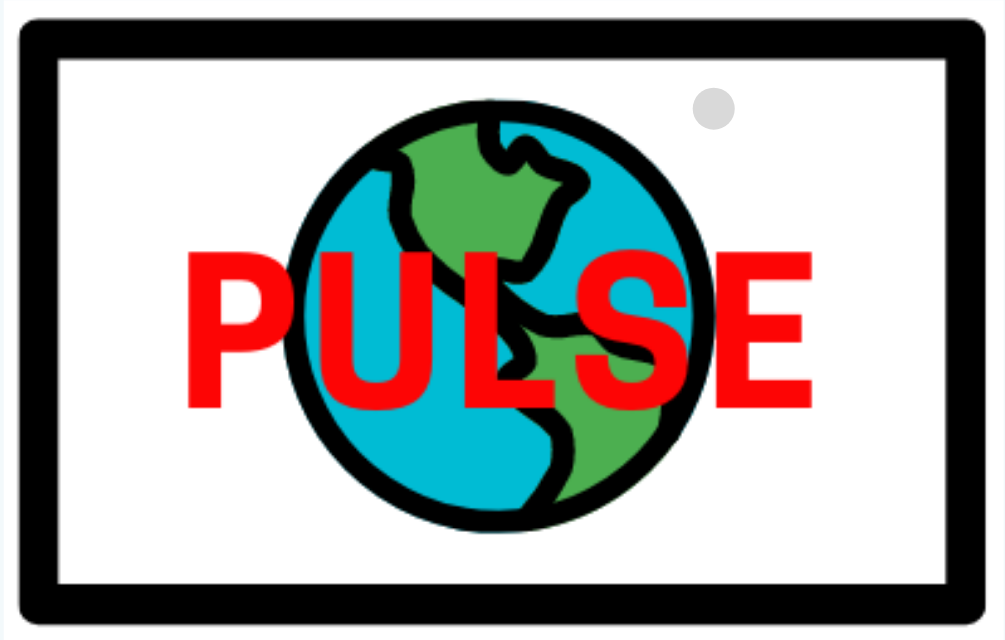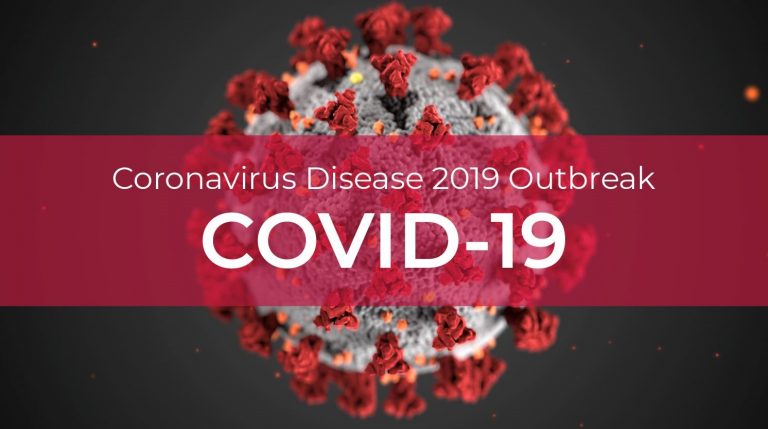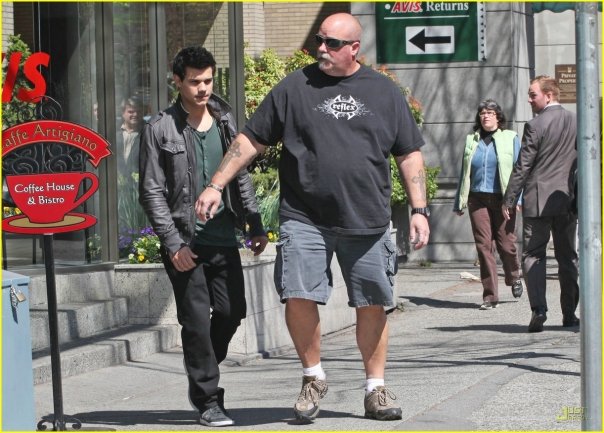The Good Doctor, a TV series shot in Vancouver for ABC/Disney and starring British Actor Freddy Highmore, has been declared the most watched television drama around the world. Last time we heard anything similar for a show shot here it was “The Beachcombers”. So, who made The Good Doctor the best? A lot of people. Let’s take a look at some of those people and, at the same time, get an idea what it takes to make a TV show today.
Before we get into that, if you have a moment, check out this selfie stick we bought from our sponsor Amazon. Don’t always have camera and tripod but usually have phone and selfie stick. Check these out before you get a crappy one when you need it. There are a bunch of these selfie sticks but must haves are:
- Fits your phone
- Bluetooth remote
- Sturd
- Long enough
- Collapses Well
- Head Swivels Many Ways 360 degrees
- Battery Rechargable by USB
- Money Back Guarantee, 30 days or more
We’ll do our best here to cover the process of making a series and most of it should apply to this show. Three caveats: First, some stuff is not properly recorded and credit sometimes goes unnoticed. Second, some references here are to “typical” scenarios and may not apply here. Lastly, we make mistakes; we get things wrong, we make typos, and we don’t know everything.
The whole process of making a film or series starts long before shooting begins; sometimes years before. Our film Supernatural Fandom, took approximately 5 years from concept to screen. If you follow the early part of the process, you sometimes wonder how any shows ever get made.
The project usually starts with an idea from a single person. That person will usually write at least one script and likely prepare a presentation for pitching it to people who might finance and/or distribute it. As you can imagine, those conversations are hard to get and helps immensely if you have a proven track record. In that case, a financier and/or distributor might even approach you. The person who starts a typical series is usually called the “Creator” (Eric Kripke, Miles Miller, Al Gough, David Nutter, Joss Whedon, Vince Gilligan, Dick Wolf, etc.) With regard to The Good Doctor, the Creator is David Shore.
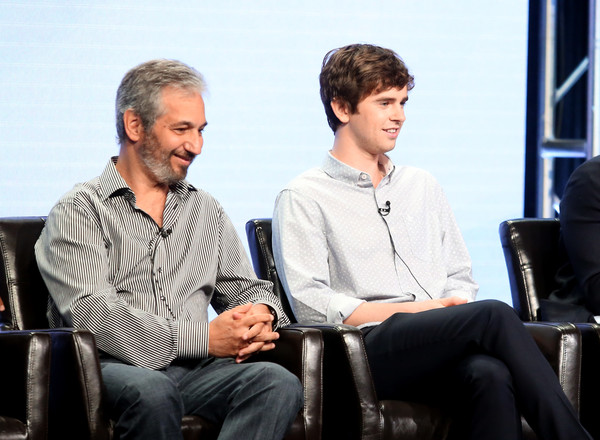
David Shore is a successful writer and series creator born in London Ontario in 1959. His illustrious and voluminous track record includes: House, Law and Order, NYPD Blue and Due South to name a few. Due South was one of the first ever Canadian shows that became popular south of the 49th. To get The Good Doctor rolling, David would have approached, or been approached by, or maybe already working with, ABC/Disney execs. ABC/Disney then bought into the idea and decided, committed resources and agreed on what product would be made. For example, a pilot only, a pilot and some episodes, no pilot just series, whatever. That decision is based mostly on available resources, available market positions and executive confidence in the financial success of the project.
David has written approximately three dozen scripts for this particular series. There are also fifteen or more additional writers, as writing during production is often a collaboration and, with so many variables, the floor is ever-shifting beneath you. As a result, scripts are sometimes changed as often as daily, even during shooting the same episode. The changes are kept track of by an elaborate, yet rigidly adhered to, colour scheme.
Once a deal has been made for financing and distribution, which often requires a commitment from a “name” or “semi-name” actor or actors, the first group of producers will get together to make some of the bigger decisions, such as, in what city will they shoot and who are the main cast they want to reach out to. Eventually, as things proceed, they will hire some more producers and start getting some things in place. For this series, there are twenty-three producers listed, including a few South Koreans which is interesting because The Good Doctor is an adaptation of a popular series in that country. Twenty-three producers is not unusual; there is plenty to do.
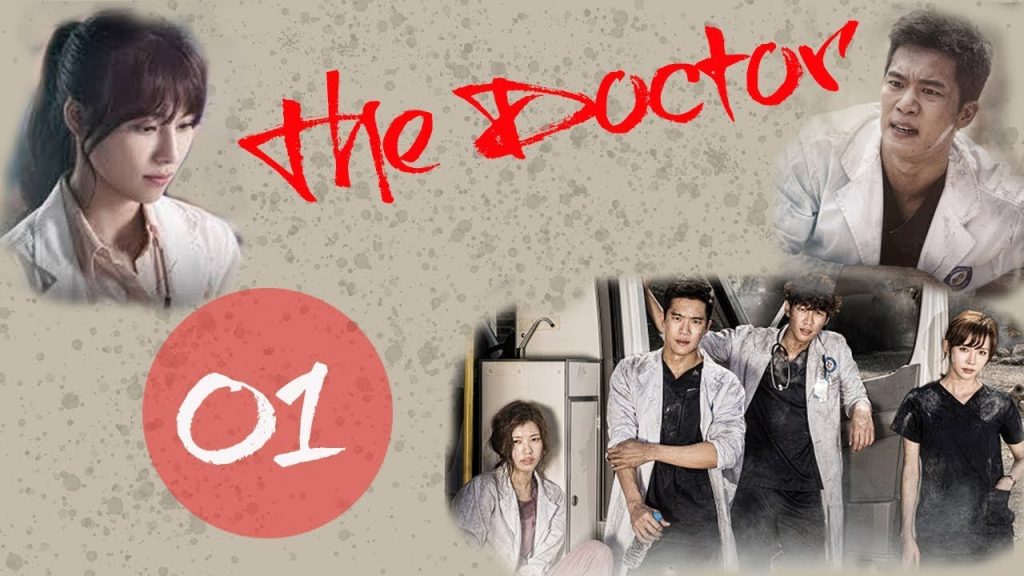
A Music Director may be hired as soon as this, so he or she can start writing and/or curating what is needed for the music track (often incorrectly referred to as the “Sound Track”). A Director or two will be discussed, especially for the first couple of episodes, and engaged, if possible. The producers may also discuss or decide upon a “Director of Photography”, aka a “DOP or “Cinematographer”.
There are rules about who can come to Canada and what it costs for various job title holders and that must be considered when coming to Vancouver from the USA. Most of the “Prep” (getting things ready), “Go to Camera” (start shooting) to the day of “Wrap”, is done by local Vancouver Crew with some exceptions. The cast will flip and flop between US and Canadian Actors during the season but the main cast, who are usually American, can come from any country. Directors can be Canadian or American and, sometimes, from other countries such as, France, Germany, the UK and Hong Kong.
The top person to be hired among the locals is a “Production Manager” or “PM”. Sometimes there is n additional layer called a “Line Producer” above the PM but more likely just a the PM. There will be an American Producer in the office and onset, called the “Showrunner”, who works with the PM to keep all things running smoothly, safely, on time and on budget. The PM manages the production by being a temporary manager of a couple hundred people who are hired just to make this one project. Which means, each is unemployed as soon as the show is done and that is part of the film production life: little job security.
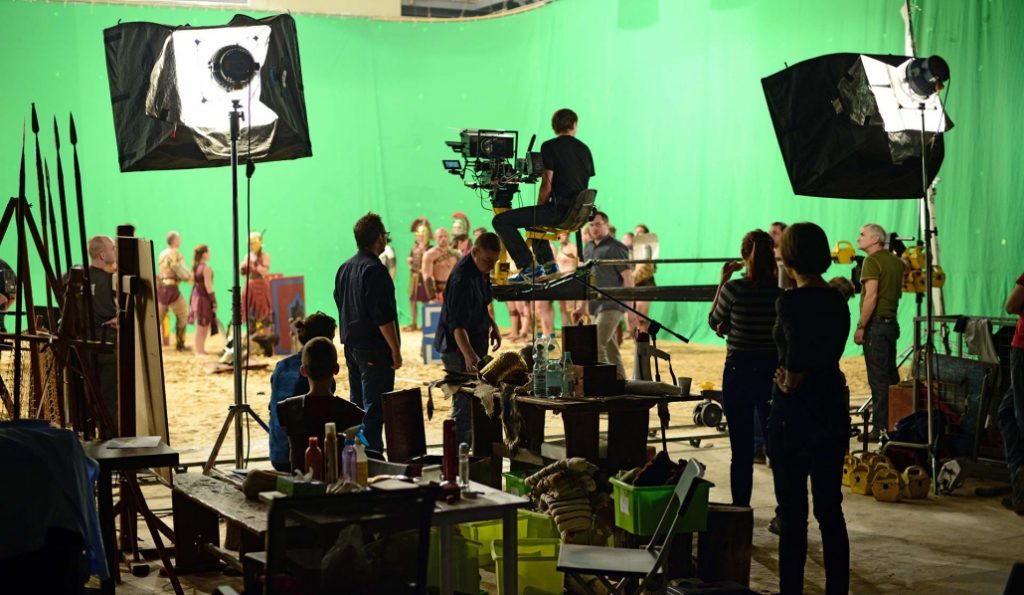
The PM will hire the “Keys”, the managing individual representing each department. In turn the Key creates a department budget, hires their usual gang plus or minus some new people, and starts lining up any rented equipment or supplies they need. They will only know some parts of what they need once they have gone on “Survey” to check out the locations. Some of the staff they hire will be fulltime (often called “Run of Show”) and some will be part-time (often called “Day Calls”).
The Keys are:
The “Art Director”, who is in charge of the “Art Department” which is huge and includes construction, set decoration, storyboarding, paint, etc; often a hundred people or more. The Art Director’s job is to interpret and create the vision of the “Production Designer” and he or she has huge resources to make this happen. Team leaders in the Art Department are often called “Foreman”.
The “Sound Department” has “Recordists” and “Mixers” onset to capture all sound (ambient and dialogue) each time the camera is rolling. They coordinate with the camera crew to ensure they keep track of which sound recordings go with which camera recordings. Sound also has a studio nearby for additional sounds, foley sounds, some editing and the recording of additional or replacement dialogue called “ADR”.
The “Camera Department” is headed by the DOP and includes the “Camera Operators” and various support staff that speed things up onset. The Camera Operator is usually with his camera the whole day from the time it gets taken out of its box to the time it goes back in. The main camera is called “A Camera” and subsequent cameras and their operators are “B Camera”, “C Camera” and so on. Typically, there will be two Camera teams on a TV series.
Incidentally, you may have heard just before every “take” (a sequence filmed) the sound recordist say, “Speed” or “Sound Speed” or “Speeding”. The Camera Op will then say “Rolling” and the Director will say “Action”. Speed and Rolling go back to the fairly recent days of tape and film. First, you hear people shouting “Lock It Up” or “Rolling!” which means stop all work, stand still and don’t make a sound. This is when you will see the studio’s red lights start flashing. The Sound Recordist will determine if the sound is clear of extraneous noises such as trains, planes or automobiles (Or barking dogs. Or lawnmowers.) and says, “Speed” in a nice loud voice. Long before, he has tested to make sure all the microphones are work, are balanced and at the levels he wants.
The word “Speed” is used because the medium, which was tape for a long time, had a second or so of time where it was not quite up to speed. If you recorded then, it would sound funny. Once it was up to speed, the recordist needed to let everyone know so, he or she would shout “Speed.” “Rolling”, as we are sure you know, comes from the reels of film rolling around on the camera’s two reels. Again, the film had to be up to speed and calling out “Rolling” was how the camera op let everyone know. Film crews love old terms and sometimes you think they have their own language.
Today, Speed and Rolling are simply an affirmation that the set is quiet, the sound recorder is on, the mics are working, the boom operator is in the right spot, the camera is all set up, the actors are on their marks and the “Shooter” (camera operator) is ready to “Shoot”. As an aside, other than in Bugs Bunny Cartoons, you won’t hear “lights, camera, action” because the lights need to be positioned and working before they even consider Action. Lighting is the most time consuming part of shooting on the day.
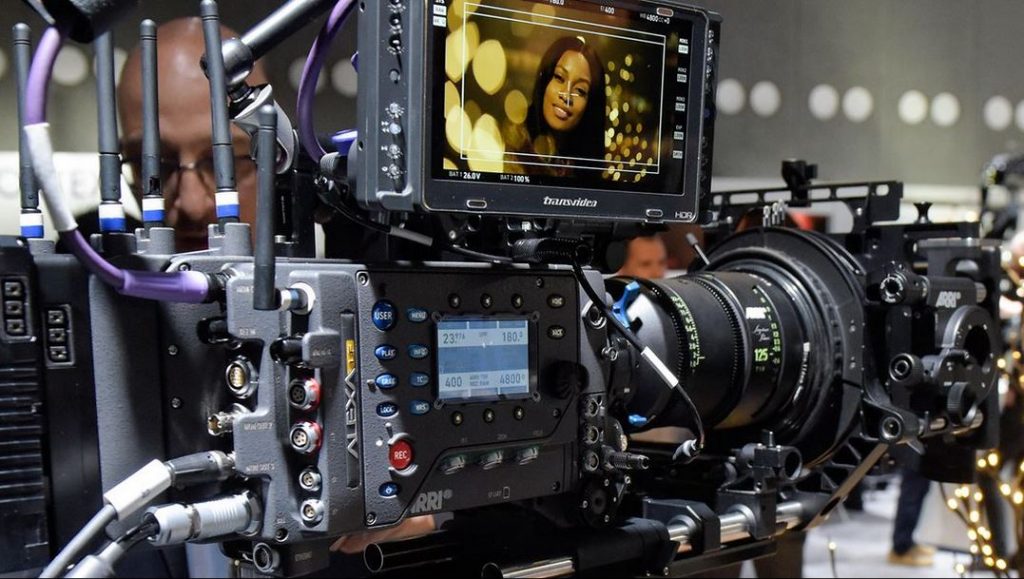
The Camera Crew reports to the DOP but when lining up a shot, they end up taking a lot of direction from the Director and they will coordinate with the actors. You will often see the first names of the actors on pieces of tape on the side of the cameras, just in case a camera op needs to get an actor’s attention: “Could you take a half a step to your left, John? Good. Thank you”. Directors are often Camera Operators or Cinematographers, themselves.
The “Electrics Department” and the “Grip Department” set up the light on set as the DOP wants it. Each department comes in two versions each: “Rigging Crew” and “Shooting Crew”. The “Gaffer” is in charge of all electrics and the “Key Grip” is in charge of the Grips. They usually both report to the DOP but sometimes there is a “Lighting Director” in between. The Gaffer hires the “Rigging Gaffer” and the Key Grip hires the “Key Rigging Grip”. The Gaffer usually stays on set for shooting and the Rigging Gaffer will be running crews (each lead by a “Best Boy”) that are setting up the next location and “tearing down” the location they have just finished with. The Grips do the same and they also have their Best Boys (who, obviously, are not boys).
The difference between Grips and Electrics is not so easy to describe because it is complicated. The crew sometimes say, Electrics (aka Lighting) makes light and Grips take light away but it is only part of it. It is mostly true with regard to the Shooting Crews, who are challenged with creating light and shade whenever and wherever the Director and DOP want. As you can imagine, they can plan some things but also have to be ready to improvise quickly for changes, such as, weather, new ideas, failed equipment, and other unforeseen things.
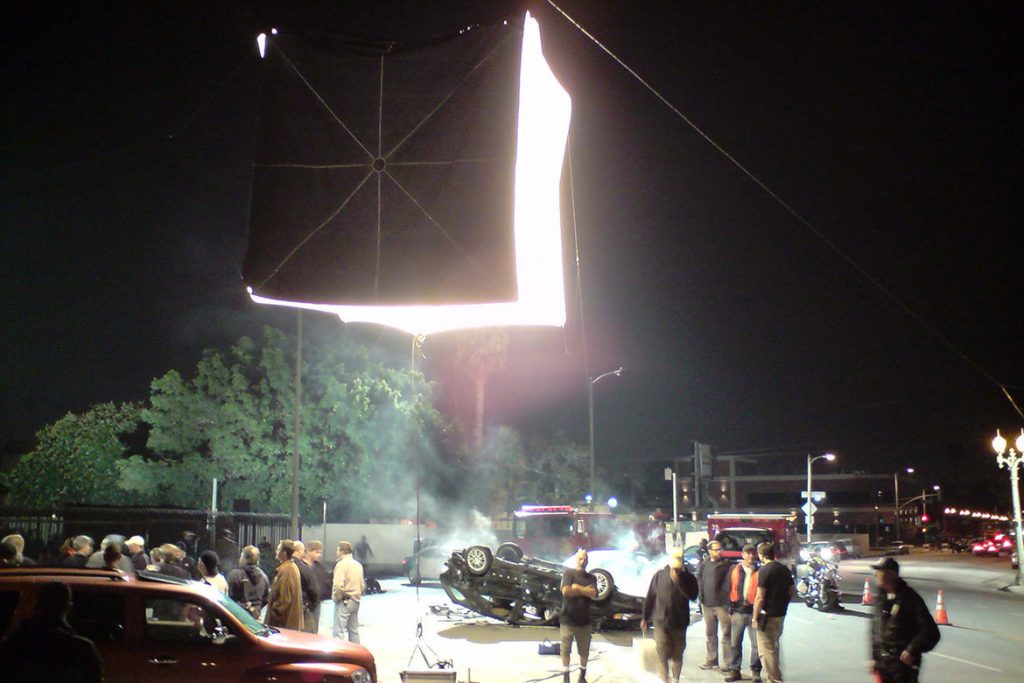
Generally, it is like this: In Rigging, the Grips will set up hardware to hold lights, they will build “Green Beds” (which are chromakey painted platforms) and they will build the tubular or wire network in the ceiling of a studio. The Electrics crew will hang lights in that network and anywhere needed, draw power from somewhere, run power cables to the lights and energize those cables with the correct electrical current. The way these things are done can vary widely from city to city.
Rigging Grips (sometimes just called “Riggers”) will also hang “rags” and set up “flags”. Flags are easy to move frames of cloth used to block out light in a particular spot. They can be small enough to be mounted on a “C Stand” or so large a machine (a Boom Lift) is used. Rags are large pieces of fabric hung over some type of structure, such as a frame, building or wall (we will talk about the locally created, Academy Award winning “Airwall” in another article). Rags are used instead of something more permanent, such as a painted wall, because they need to be quickly changeable. Sometimes a black rag is hung to absorb light or white rag is hung to bounce light. Sometimes the rag is a special green or blue so it can be chromakeyed, in order for VFx to later add effects, such as, an oncoming airplane crash, a giant tsunami wave or a fire-breathing Godzilla.
The Electrics Department come in right on the tail of the Grips to set up the lights and do what they need to do to get the electricity that feeds them. They are in charge of any electricity on set; either what comes out of the wall boxes of the studio or what they get from generators that they bring in. They are also responsible for providing, hanging, moving, aiming and powering up the myriad of lights, junction boxes and cables necessary. The Electrics Rigging Crew sets up as much as they can and the Shooting Crew will turn the lights on, point them and make changes as requested by the DOP.
We are sure you have heard of the “Special Effects Department” or “SpFx” and have some kind of an idea what that department does (Yes, you are right, they are usually blowing something up). You might not know the difference between SpFx and “Visual Effects” or “VFx”. Simply put, and recognizing nothing is simple, SpFx is anything physical, such as, smoke, helicopter wash, an elevator door that opens, wind, rain, and plenty of explosions, etc. There are some exceptions. For example, the special effect of lightening is often practically created by the Electrics Department and sometimes digitally created, or enhanced, by Visual Effects. Same goes for the ubiquitous flickering lights in the haunted mansion.
VFx is all digital enhancements, such as, flames out of a tail pipe, laser beams coming out of a squirrel’s eyes, the standard glowing sword or more-bigger flames. Also, VFx sometimes create completely structured elements such as a ghost, a passing ship, a firefly floating on the wind, or more-bigger flames.
People often ask, if that is the case, why is there a VFx person on set? The reason is, the shot needs to be set up in such a way that it enables or maximizes the Visual Effect they plan to create. This sometimes makes the shot possible, such as a nice dark place for the ghost to appear, or sometimes just makes it better, such as, arranging it in the camera frame better.
“Hair” and “Makeup” get their own salon-like trailer, complete with salon chairs, to get all the hairs in place and remove all traces of a hang-over from the talent. The Hair Department is responsible for how the hair looks on the head only; some big stars bring their own hair stylists (and wigs). Makeup does the face, whether it is facial hair or makeup, and the rest of the body. Hands often get makeup, for example. The hair stylist never touches your moustache, your big bushy sideburns or your Hobbit feet. Hair and Makeup each have a person on set to do “touch-ups” on the actors; usually just before the camera rolls. This is what is meant when the “1st Assistant Director” calls “Final Touches!”.
The most important thing is, the hair and makeup must not change when the shot changes. A person can’t have a mole and green hair in one shot and then red hair and a pimple on the “reverse”. That would be bad. In addition to regular makeup, there is sometimes specialized makeup, like the people needed to turn the Hulk all green, and there is also “Special Effects Makeup” which creates wounds, alien faces, big noses, a third eye and stuff like that.
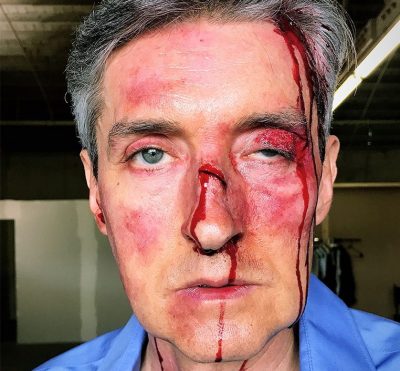
The size of the “Costume” (aka “Wardrobe”) Department can vary widely based on many factors but, in a television series, they will have at least a “Head Costumer”, maybe a Buyer or two, an “Onset Dresser” or two and usually at least one seamstress (let me know if I have that wrong) as far as I have seen. As with Hair and Makeup, Costumes gets its own trailer in the “Circus”. The Circus is the place where the “Film Unit” parks all its stuff for a shoot. Could be at a studio or on location and is organized by the “Transport” or “Transportation” Department. The Circus has to be fairly close to set but not so close it makes noise for the set. There are a few vehicles close to the set because they need to be, but most are at the circus.
The Transport Department is headed by the Transport Coordinator who hires a couple of Captains to supervise the drivers on and off the set. The Transport Department is responsible for providing and managing four things: drivers for all vehicles, vehicles used to transport people and equipment, vehicles used in the show (“Picture Cars”) and they are responsible for Security on set and at the circus. There is a division within the Teamsters Union that provides Security Guards. Interestingly, any gate providing access to an area where the production wants to control access to (usually a set) is staffed by the “Locations Department”, not Security. Things that make you go “Hmmm”.
The Transport team is first on site and last off. For this reason, they work the longest hours. People complain sometimes if they see a driver sleeping but it is usually because there are more than twelve hours between driving in and driving out and he or she needs to rest. There are strict rules about who can and who can’t operate a vehicle on or off camera. When in doubt, leave it to the Teamster.
The Locations Department works closely with the Director and “Assistant Directors”. The head of the department is the “Locations Manager”, who is usually in the office managing the department or working out scouting or making deals for locations. The Locations Manager will have two or more “Assistant Locations Managers” or “ALMs” who are the onset team leaders at each location on shoot days. Security of the property is their responsibility during a shoot day. If the show is shooting inside someone’s house, they make sure nothing is damaged. At any shooting location, they provide a spot for the Circus and parking for everyone else, called “Crew Park”. There often a shuttle bus (or six) running from Crew Park to the Circus and to Set. People in this department start as a “Locations PA” (Production Assistant), usually manning a gate in a remote forest where it rains all day every day and where mosquitoes are as big as beagles, and work their way up from there.
The “Stunt Coordinator” hires “Stunt Performers”, including the “Stunt Double” for each actor, aquires any equipment needed and budgets the stunts planned for. The Stunt Coordinator works with the Director to work out cool -looking stunts that “sell” (i.e. don’t look fake) all-the-while keeping everyone safe. Some stunts are non-specialized, like fights and short falls, and there are lots of people (even some actors) who can do them. Some stunts, however, are more dangerous and are performed only by a highly specialized few, such as, a “full body burn”, a long fall of several stories or jumping a motorcycle over a cow. For some more complicated stunts there is an experienced “Stunt Rigger” who sets up “the gag” in the safest way possible. An example of this is rigging a cable for Supergirl to “fly” on. It is incredibly foolish to risk an injury to an actor. Even a small injury could potentially shut the show down (called “Force Majeure” in insurance language) so Stunt Performers should be used whenever possible.
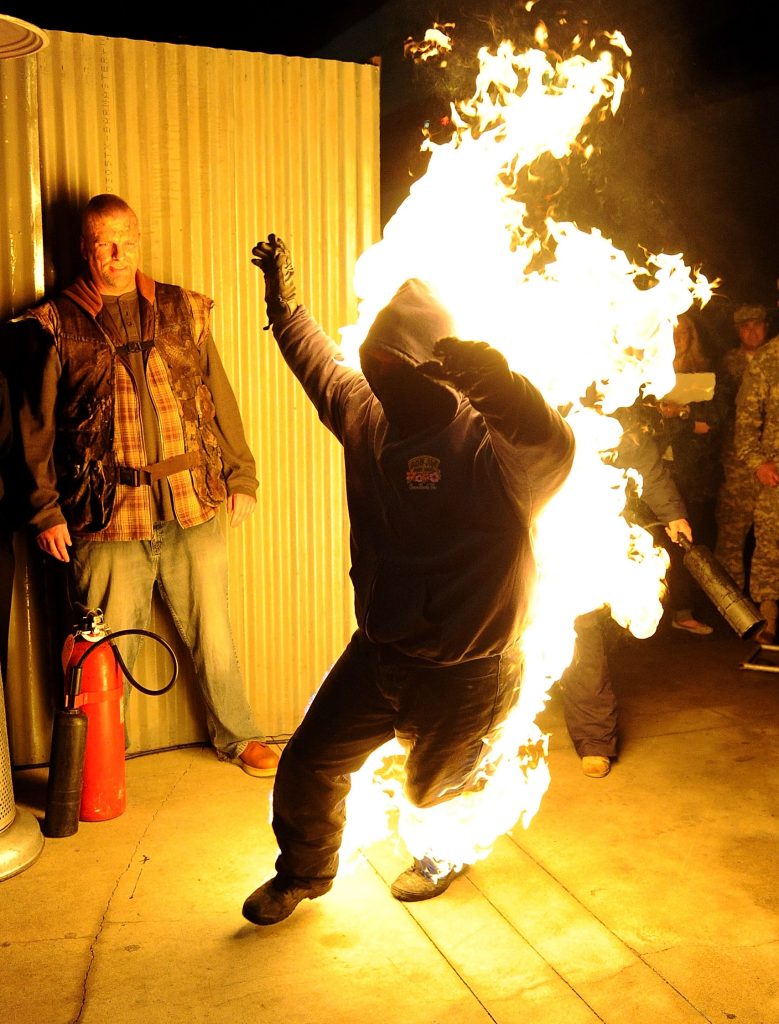
Photo by Frazer Harrison/Getty Images
There is a team of “Assistant Directors”. The “1st Assistant Director” or “1st AD” is in charge of everything on set, including safety. The 1st AD will very rarely step away from the set during the entire shoot day but will call for things to be done. When the 1st AD speaks, everyone must be quiet and listen or serious problems can occur. The 1st AD is responsible for getting all departments to make things happen for the Director. He or she brings it all together. Other than the Director and the Camera Operator, only the 1st AD will typically speak to the lead talent on set, especially the main star or stars. He will not, however, give them direction. Only the Director does that.
The “2nd Assistant Director” usually lives in the AD office at the Circus and is charged with paperwork and planning, including the daily “Call Sheet” that tells everybody, where and when to show up for work the next day, which scenes are being shot, which actors will be working and other important stuff, including a map and address for the nearest hospital. Each crew and cast member working the next day will get a call sheet before going home.
The “3rd Assistant Director” is the liaison between the circus and the set, keeping track of talent and escorting them to set when called for and sometimes finding a crew member needed on set. There is often a “Trainee Assistant Director” who will be assigned various duties, mostly with the 3rd AD, at the Circus.
What’s the difference between “Set Dec” and “Props” you ask? The “Set Decorator” and staff are responsible for “dressing” the set. That means adding furniture, curtains bookshelves, fake rocks, old cars, yurts or elephant bones to the set the Construction Department built. Pretty much everything you see lying on set that no-one touches is Set Dec. If it gets touched, it’s a Prop. There is an “Onset Dresser” responsible for making adjustments. If a couch has to be moved, for example, the Onset Dresser makes it happen, no-one else. Everything onset is considered “hot” which means it could be in the shot so, for everyone’s sake, you don’t move it unless asked to do so. If it has a layer of dust on it, you don’t wipe it off.
The “Properties” Department, headed by the “Prop Master” is responsible for providing anything an actor or extra has to wear that is not clothing (utility belt, jet pack, etc) and anything that any actor or extra holds in their hand on camera (gun, knife, ice cream cone, radiation meter, dead alien skull, etc.). Properties acquires these props and sometimes makes them. Guns are managed by a particular on set Properties staffer called an “Armourer”. These highly trained and specialized people control all real firearms onset to ensure safety. In spite of this, and the fact low charge blanks are used, actors have still shot themselves plenty and some have died. The Armourer is also responsible for providing and legally transporting the firearms and any ammunition that is needed.
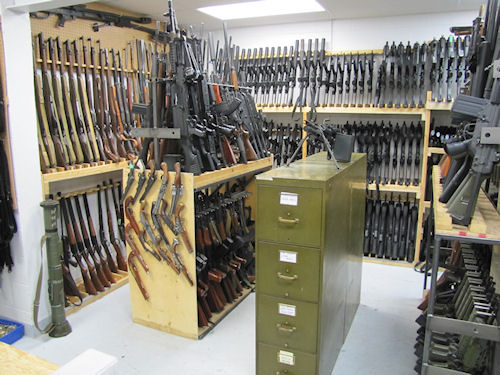
One of the least understood departments is “Greens”. There is a greens department, either working or on call, for nearly every production. As part of the Art Department they work with many departments to add trees, grass, shrubs, flowers and anything else that grows or is part of the dirt wherever they are needed; sometimes to hide things, sometimes to help create a set, sometimes to create a visual element.
There is a “Script Supervisor” who is always near the Director to help make sure he gets all the shots he wanted to, all the shots the producer wants him to get and all the shots on every page of the script he was committed to on that day in that location. TV shoots about 7-10 pages a day. Feature films shoot 1 or 2.
One of the first people to arrive onset is the “Craft Services” person. Usually called “CSFA”, because they are also the principal first aid attendant on set, they provide a few tables of snacks or light meals for crew to grab on the fly between meals. Obviously, a very important person to know and everyone has their favourite CSFA person, usually depending on their cookie baking skills. They also have your Tylenol or cough syrup, and they make the coffee. There is an old saying among producers, “Coffee brewed” not “brewing”. The point being, have coffee ready when people arrive and don’t run out. Film production runs on coffee.
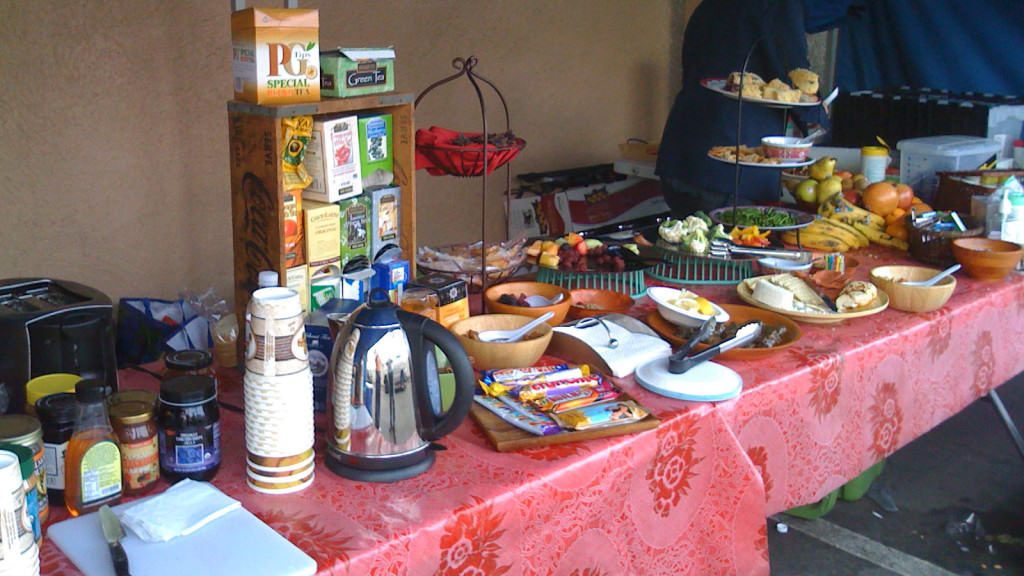
As I mentioned earlier, the Director will most often be a person who has experience directing the type of show that is currently under their direction. In TV, each show has a list of the directors they think are a good fit for the show. Producers, writers and even actors already working on the show, will also do some of the Directing. This particular show, The Good Doctor, has had a couple of dozen Directors in the first two seasons. Often, the schedule for TV during shooting season is, one Director “Prepping” (doing survey, creating a shot list or storyboard, etc) one Director Shooting, and One Director supervising the editing and post production. Each works on a different episode. That’s the cycle.
You will sometimes in news media here Directors quoted as saying, “The crew knows everything, it’s so easy, they do everything. I just have to nod yes once in a while” or something like that. Don’t believe it. The Director is critical and, as any crew member will tell you, the atmosphere on set changes immediately and distinctively, depending on who is directing that episode. Each director has his or her strengths and weaknesses but they always have a significant effect on the outcome
The “Post Production” Department can be huge. There is Editing, Sound Design, Colour Correction (sometimes called “Colour Timing” or “Colour Grading”, Visual Effects, and Music, to name some. And each of those departments have staffs that can be huge. Some Post is done in Vancouver, most is in LA.
The “Production Office” which exists only for the duration of the show and who’s staff are only employed as long as the show is shooting, consist of all the administrative departments you can imagine (accounting, payroll, HR, etc) plus specialized jobs such as Contracts, Visas, Scripts and accommodation bookings, etc. The person directly under the Production Manager is the hard-working Production Coordinator who runs most of the office staff and makes sure everything is done and on time. A highly stressful job.

You forgot the cast, you say! Well, the way shows are cast varies a great deal. Roughly, a TV show works like this: there are essentially three casting departments and often none of them cast the key actors because those people are sometimes the most important thing in the project; from a financing point of view, from a marketing point of view, and as an essential element for a successful production.
There is a “Casting Director” in LA who casts most of the larger parts and guest stars, who are Americans coming across the border. The Federal Government, Provincial Government and the Unions are in constant talks for the tug a war of hiring local as opposed to hiring the producers’ countrymen. It is tricky because who is best for a part is completely subjective and very hard to justify either way.
Any roles not cast in LA, which are sometimes guest stars and, in rare cases, leads but mostly “Day Players” (rolls that work only a day or three), are cast by the Vancouver Casting Director. The thing all actors who get cast in a Day Player roll are hoping for in any TV series is for it to grow into a “Recurring Role”. Which happens. The producers sometimes like the character or the actor and the writers write them into the script and away you go. A recurring roll is still not part of the main cast and they probably won’t be on the show’s poster or bus-stop ads. Those actors are called “Series Regulars”.
“Extras Casting” or “Background Casting” is separate department that hires and supervises “Background Performers”, “Special Skills Background” Performers (crane operator, horse rider, scuba diver, etc) and the “Stand-ins”. The actors need Stand-ins because setting up a shot can take hours and the crew need a person to stand in so they can line up the shot and light it. In the meantime, the actors are escorted back to their dressing room so they can work on their performance.
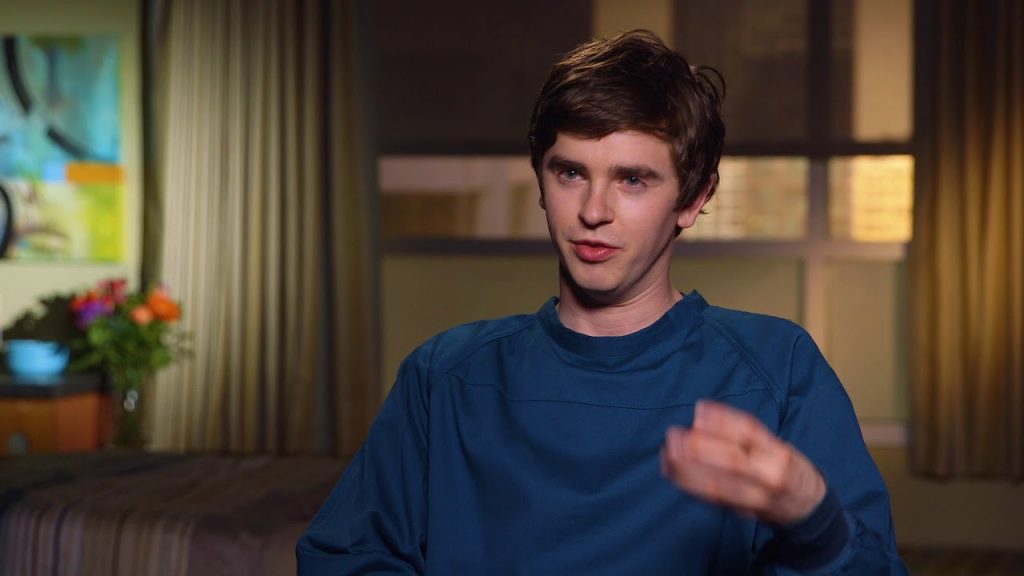
Then the film gets marketed and distributed which usually costs as much as making it.
Now tell me what we missed.
